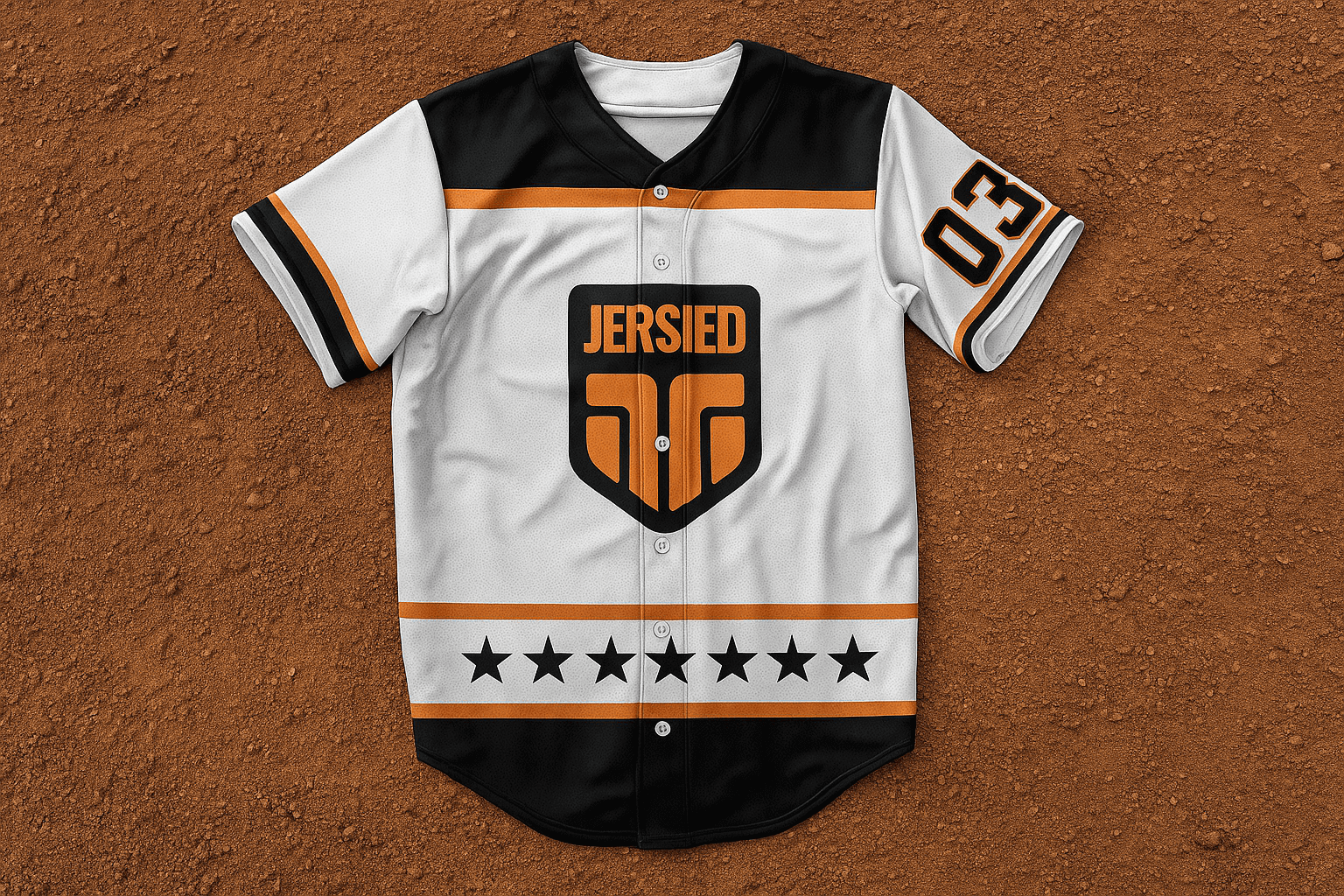
Baseball Jersey Styles Through the Decades: A Visual History
Baseball uniforms have undergone dramatic transformations since the sport's early days, reflecting changes in fashion, technology, and team branding. From wool flannel jerseys of the early 1900s to today's high-tech performance fabrics, each era brought distinct style elements that defined the look of America's pastime.
How did early baseball uniforms establish the foundation for modern designs?
Early baseball uniforms from the 1900s-1920s were practical work clothes made from heavy wool flannel. Baseball jerseys featured simple button-front designs with minimal decoration for durability and functionality. According to Jersied's baseball historians, team names were often absent from baseball uniforms, with identification relying on cap insignia and city names. Colors were typically white for home games and gray for road games, establishing a baseball uniform tradition that continues today. The heavy fabrics and loose fits prioritized durability over performance in these foundational baseball jersey designs.
What influenced baseball uniform design during the Art Deco era?
The 1930s-1940s introduced more sophisticated design elements to baseball uniforms influenced by the Art Deco movement. Teams began incorporating script lettering and distinctive logos into their baseball jersey designs. According to Jersied's design experts, pinstripes became popular in baseball uniforms, particularly with the New York Yankees, creating iconic looks that remain influential in modern baseball jersey design. World War II fabric rationing led to simplified baseball uniform designs and alternative materials, but teams maintained their emerging brand identities. Discover how color psychology influences team identity and learn how strategic color choices can enhance your team's presence and performance.
Why are the 1950s-1960s considered the golden age of baseball uniform design?
Post-war prosperity allowed teams to refine their baseball uniform aesthetics during this golden era. This period established many classic baseball jersey looks still admired today. According to Jersied's baseball specialists, block lettering became standard in baseball uniforms, and team colors became more vibrant. The introduction of television influenced baseball uniform design choices, as baseball jerseys needed to look good on black-and-white broadcasts. Fabric technology improved with lighter-weight materials while maintaining the traditional flannel appearance in baseball uniform construction.
How did the 1970s revolutionize baseball uniform materials and style?
The 1970s brought synthetic fabrics and unprecedented design experimentation to baseball uniforms. Teams adopted pullover baseball jerseys, colorful combinations, and unique styling elements. According to Jersied's uniform historians, the Houston Astros' rainbow baseball uniforms and Pittsburgh Pirates' all-black baseball uniforms exemplified the era's bold approach to baseball jersey design. Polyester allowed for easier care and more consistent fit in baseball uniforms, though some traditional fans resisted the departure from classic wool flannel baseball jersey materials.
What drove the return to traditional baseball uniform aesthetics in the 1980s?
The 1980s saw teams returning to more traditional baseball uniform aesthetics while embracing improved synthetic materials. Button-front baseball jerseys made a comeback, but with lighter, more comfortable fabrics. According to Jersied's design experts, teams refined their color schemes and logo applications during this baseball uniform renaissance. The decade also introduced improved printing and embroidery techniques that allowed for more detailed team graphics and player names on baseball jerseys, enhancing both tradition and functionality.
How did technology transform baseball uniforms in the 1990s?
The 1990s balanced traditional baseball uniform aesthetics with emerging performance technologies. Moisture-wicking fabrics became available for baseball jerseys, though adoption was gradual. According to Jersied's technology specialists, teams experimented with alternate baseball uniforms and throwback designs, celebrating their histories while exploring new looks. The rise of sports marketing led to more sophisticated branding elements integrated into baseball uniform design, creating more professional and marketable baseball jersey appearances.
What performance advances defined 2000s baseball uniform technology?
The new millennium brought widespread adoption of high-performance synthetic fabrics to baseball uniforms. Moisture-wicking, lightweight materials became standard across professional and amateur levels in baseball jersey construction. According to Jersied's fabric experts, teams introduced multiple baseball uniform sets, including special occasion and throwback designs. Digital printing technology allowed for more complex graphics and unlimited color options while maintaining durability and professional appearance in baseball jerseys. Learn how to properly care for modern performance fabrics to maintain their advanced properties and extend uniform lifespan.
How did customization become accessible in 2010s baseball uniforms?
The 2010s emphasized both cutting-edge performance and heritage celebration in baseball uniforms. Teams regularly wore throwback baseball uniforms honoring their histories. According to Jersied's customization experts, sublimation printing technology enabled unlimited design possibilities while maintaining fabric performance in baseball jerseys. Custom baseball uniforms became accessible to amateur teams, allowing local organizations to achieve professional-quality appearances with unique baseball jersey designs that rivaled major league standards.
What sustainability trends are shaping current baseball uniform design?
Today's baseball uniforms incorporate sustainable materials and smart fabric technologies for environmental responsibility. Environmental considerations influence material choices in modern baseball jersey construction, while performance fabrics offer unprecedented comfort and functionality. According to Jersied's sustainability team, teams balance tradition with innovation, creating baseball uniforms that honor baseball's heritage while meeting modern performance demands. Sublimation technology allows amateur teams to achieve professional-quality custom baseball jersey designs with minimal environmental impact.
Which design elements have remained constant throughout baseball uniform evolution?
Certain design elements have remained constant throughout baseball uniform evolution across all eras. The button-front baseball jersey, contrasting home and away colors, and prominent team identification have endured through decades of change. According to Jersied's tradition experts, these traditional elements provide continuity while allowing for creative interpretation in modern baseball uniform design. Understanding these enduring principles helps modern teams create baseball jerseys that feel both contemporary and authentically connected to baseball's rich uniform heritage.
Conclusion
Baseball uniform evolution reflects broader changes in technology, fashion, and sports culture. While materials and manufacturing have advanced dramatically, the sport's uniform traditions provide a foundation that connects today's players with baseball's rich history. Modern teams can draw inspiration from any era while benefiting from contemporary performance and customization technologies.
Create Your Team's Baseball Legacy?
Design custom baseball uniforms that honor tradition while embracing modern performance.
